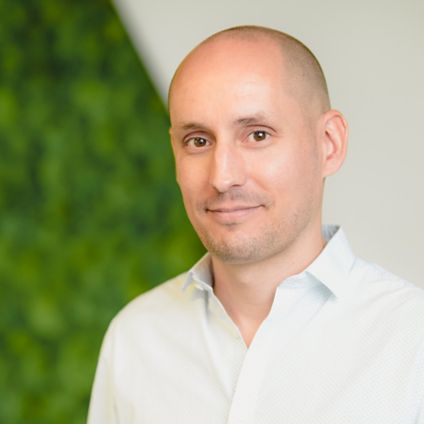At Alan, Cedric De Vleeschauwer was a pioneer in online health insurance. While others have followed his example, his pioneering spirit has provided market leadership. According to De Vleeschauwer, four pillars form the model on which insurance in 2030 is based.
Customer centricity is one of the four pillars on which the insurance world is based today, in 2030. Not coincidentally, it was also one of Alan's pillars at its start in Belgium in 2020. Back then, chatboxes, in particular, provided fast interaction with an average response time of 30 seconds. Today, not only are we much faster, we also use all the quickest means of communication available.
Customer centricity, of course, also means fast refunds. That was an issue for the market in 2020 and still is an issue today, in some cases. For Alan, again, it is nothing new. Ever since we started in Belgium, we’ve paid back most of our policyholders' expenses the same day. We achieved our 100% ratio back then within 72 hours - now it’s even faster.
Despite the fact that customer centricity has become a core element of all insurers, we still have a long way to go as a sector. I am therefore convinced that it is one of the fundamentals that will continue to be a differentiator for us in the future.

Cedric De Vleeschauwer
General Manager for Belgium of Alan
Data helps automation, tailoring and prevention
To achieve this high degree of customer centricity, technology and data have played important roles. Data and technology are therefore the second pillar of the insurance world in 2030. They are not an end in themselves, but an important means that lead to something valuable. It is not data for data's sake. And, of course, there’s no data without consumer consent.
Data help automate processes in insurance. Whereas eight years ago the share of automation in the entire flow was about 30%, it now totals 80 to 90% of the entire process. Onboarding a new customer remains manual, but after that you can gradually introduce more and more automation. The customer also favors this.
Of course, over the past decade we’ve received help to increase that level of automation. Since hospital bills, doctor’s bills, and third-party bills are all digitized, that automation is easier.
Automation isn't the only benefit that data provide. They are also used to prepare a tailored offering, based on prevention, which you receive immediately as a prospect. After all, the more accurate the data related to a customer's health, the more personalized the prevention initiatives you can propose to them become.
Whereas the share of automation in the entire flow was still about 30% eight years ago, we have now reached close to 100% of the entire process.

Health partner
The concept of prevention indicates that insurers today are not just insurance companies. Prevention is the third pillar in the insurance world. A lot of insurers want to have a bigger impact. With Alan, this was the case from the start. We have never positioned ourselves as a health insurer. We defined ourselves as a health partner.
Technology also helps here. From the beginning, we had a medical chatbox with doctors, psychologists, and therapists for our customers. Those who wanted a personal conversation could go to the app for a video call. For mental health we also soon had an app with Alan Mind. That is how you go from health insurance to health benefits.
That was, and is, a much-needed evolution because insurance is becoming more and more of a commodity. Third parties can also contribute to this. They can plug into your platform with their services, an evolution we have seen grow in recent years.
Market leader
A final pillar is the pricing model, which was hopelessly behind in 2020. Now it is strongly based on that of SaaS companies, with a very simple pricing model, where you choose from a number of options. Either we provide those options ourselves, or go through third-party providers.
Actually, the situation now is as we predicted it would be, eight years ago. We had never estimated the circumstances of the industry over such a long period of time. Although we think very long term, usually planning with a window of 1-2 years. And even then it is just planning, certainly not a guideline to which we adhere adamantly. After all, you evolve according to an iterative process, to new technologies, etc. Each step takes you somewhere you have not been before, allowing you to make fresh decisions and take new steps. This way of working has ensured our position as market leader with several million clients.
Insurers today are no longer just insurers. We have positioned ourselves as a health partner right from the start.
Middle-man
Besides the pillars, there is the distribution model. When Alan entered the market in 2020, the direct distribution model was fairly revolutionary. Now it is much more established, but not the only model.
Brokers are still around and will continue to be, but you feel that today, in 2030, they need to clearly demonstrate their added value. That could be in pointing out the gaps in your insurance portfolio. After all, this has become a tangle: some insurance you take out online, some are embedded with a product you buy, and some are provided by your employer. Those who can demonstrate their added value as a personal insurance buddy have a bright future ahead of them.
About the interviewee
Cedric De Vleeschauwer is General Manager for Belgium of Alan, a French online insurer that has also been operating on the Belgian market since 2020. Alan now has several hundred customers and tens of thousands of insurance holders in its portfolio. De Vleeschouwer does not have a background in the insurance world, but he comes from the world of startups and scaleups, with experience at Showpad, Netlog and his own startups Recrooter and Proudfield, among others.


